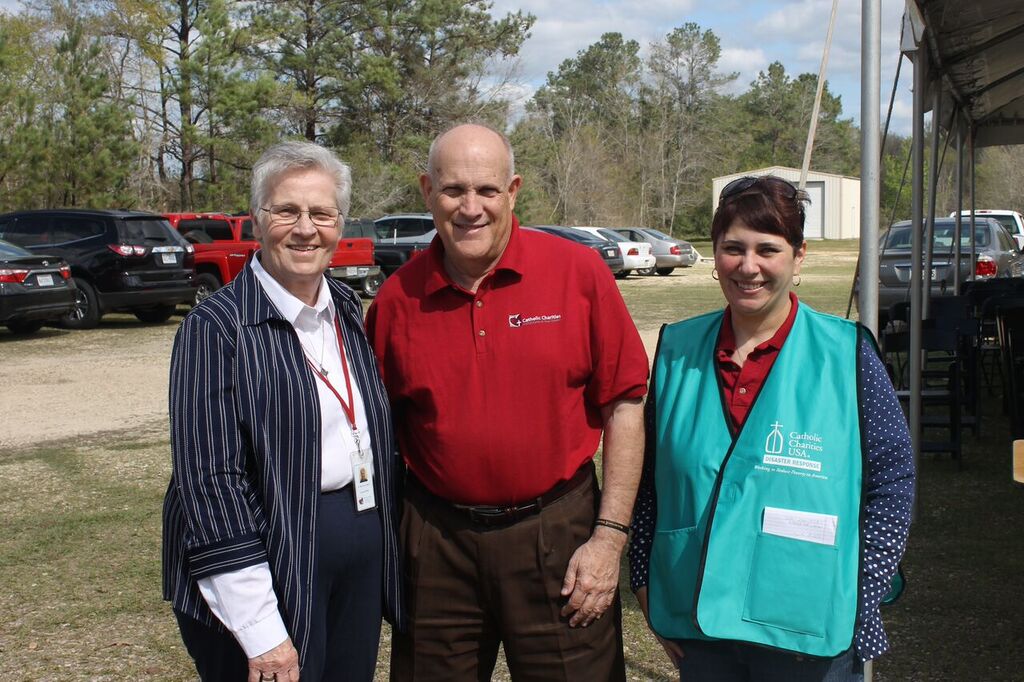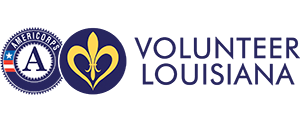By Peter Finney Jr., Clarion Herald
One of the important lessons Catholic Charities Archdiocese of New Orleans learned from recent natural, engineering and environmental disasters – Hurricanes Katrina and Rita in 2005, Hurricane Gustav in 2008, BP’s Deepwater Horizon oil spill in 2010 and Hurricane Isaac in 2012 – was the importance of quickly marshaling its multiple recovery resources.
“Archbishop (Gregory) Aymond likes to say we are the early responders and the forever responders,” said Tom Costanza, division director of Catholic Charities.
Full-time director
With south Louisiana’s geographic vulnerability to hurricanes, Catholic Charities recently took a significant step by hiring its first, year-round, full-time emergency management coordinator, Kevin Carlson.
“Disaster management is one of the five strategic directions in our strategic plan,” Costanza said. “We have a plan where we will be doing table-top (communications) with the City of New Orleans.”
Catholic Charities discovered after Katrina the importance of visibility and quick response following a disaster, even though in previous decades it was known more for its long-term efforts.
After recent disasters, including the powerful, EF3 tornado in February 2017 that cut a swath through New Orleans East, Catholic Charities has been on the ground quickly, establishing food and supply distribution centers at Catholic church parishes nearest the affected areas. Most churches have parking lots that can accommodate 18-wheelers and other large vehicles so that food, water and cleaning supplies can be distributed quickly.
Church parishes also have a large pool of dedicated volunteers and organizations such as the Knights of Columbus or Knights of Peter Claver, who can cook meals for disaster victims and first responders, as well as help with clean-up.
“Churches can provide the labor, and we can coordinate the resources,” Costanza said. “After that, we find a place to do long-term case management.”
Carlson, who worked previously with Catholic Charities’ Health Guardians program, has master’s degrees in social work (MSW) and public health.
“He has a unique combination of social skills and data management skills,” Costanza said. “He has worked disasters before with us. When something hits, he will head up our emergency response team. Within our organization, we have plans set up when a storm is 72 hours out and 48 hours out. He’ll be the point person to bring everyone together. Once the storm hits, we’ll assess the damage and do what we’ve been doing over the last several years.”
Joining hands
Catholic Charities in New Orleans also has strengthened its collaboration with its counterparts in the six other Louisiana Catholic dioceses. There also is a much more fluid relationship with local, parish and state disaster agencies as well as non-governmental organizations such as the Salvation Army, United Way and agencies run by the Lutheran and Methodist churches, Costanza said.
Much of the food and water distributed immediately after the storm comes from Second Harvest Food Bank, another agency of the Archdiocese of New Orleans.
The motto of “forever responders” isn’t just a nice catch phrase. Earlier this month, Catholic Charities finally closed the books on its case management response to the 2016 flooding and the New Orleans East tornado in 2017.
“We will be there,” Costanza said. “This is what we should be doing as church.”






